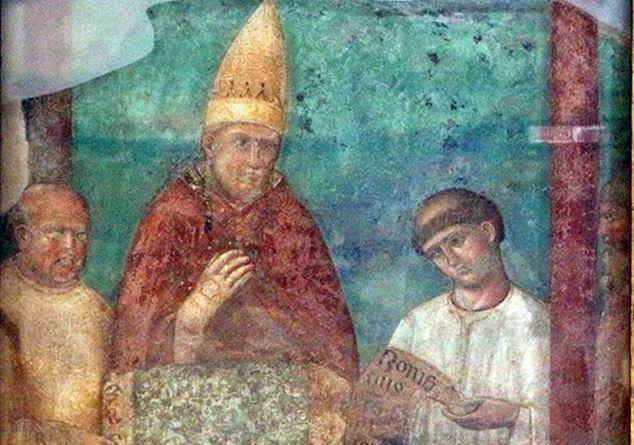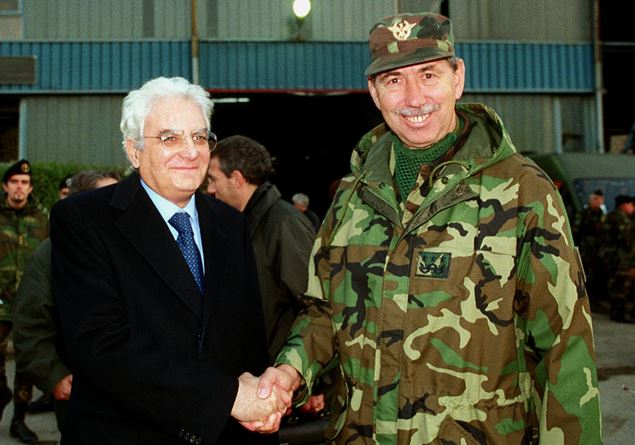
Monsignor Rino Fisichella, appointed by the Pope to organize the Holy Year 2025. Above: the crowd greets Pope Francis in one of the final moments of the Jubilee of Mercy, 2016. Photo in the article: ANSA.
«The Jubilee of Hope comes to be seen as a response to everything that humanity and individual people experience in this historical context». Monsignor Rino Fisichella, pro-prefect of the Section for fundamental questions of evangelization in the world of the Dicastery for evangelization and entrusted by the Pope with theorganization of the Holy Year, explains that precisely in moments that seem so desperate, a Jubilee makes sense which «calls us to be “pilgrims of hope”».
Your Excellency, how can we hope with the war in Ukraine, the Middle East in flames, Syria, but also with the poverty of our homeland, with violence?
«Wars have a great impact because they blindly kill innocents and destroy homes. But we must not forget the other forms of violence that affect our daily lives and which put the hope of many people to the test. I am thinking in particular of a typically Italian situation for which we have even created a name: “feminicide”. Around 16 women are killed every month and these are innocent victims, often together with their children. Let’s also think about the deaths at work, those on the streets, the massacres on Friday and Saturday evenings, and I could continue… It is precisely these situations that increase the desire for hope. However, we must convince ourselves that it is not given to us because we live in a situation of violence and evil. Hope is given to us to build our present. It is a commitment to becoming concrete signs of hope ourselves.”
In your book you touch on the theme of repressed death. He says he saw a picnic in a cemetery.
«This is a fundamental theme and I hope that our catechesis, in this Year, will return to dealing with it. Unfortunately, the sense of death has disappeared in the new culture we live in. It seems like everything is fiction, TV series. Death, however, is a reality that each of us needs to deal with. And the announcement that we are called to give of hope, not only in the Jubilee, but in every day of our Christian existence, is that death has been conquered because Christ has risen. In this sense the Jubilee becomes a profound opportunity for evangelization.”
Is this why the anchor sign also appears in the logo?
«The first Christians, already at the end of the 1st century, in the catacombs of Priscilla in Rome, placed epigraphs – we have over 70 – on the slab that covered the wall where the deceased was placed. There was always the Christ-like anchor. It indicated Christian hope, the certainty of faith in the resurrection. We wanted it, this symbol with the cross anchored to the sky, for the Jubilee. Returning to the Letter to the Hebrews, we wanted to underline that we must cling to Christ, our hope, as if to an anchor. In the sea, which is the sign of life with its joys and its sorrows, with its difficulties and with the violence we have spoken of, we must remain in Him, who gives us security, fidelity and the certainty of the love that cannot fail.”
Will this be the first Internet Jubilee?
“It is true. We are making great use of it. In the 2000 one we only had e-mail. Already at the time I remember the surprise of some collaborators when they saw that the texts, within a few seconds, arrived all over the world. Now we are confronted with another world. The Web requires us to also be able to grasp its limits. This tool rushes us, it tells us that we have to do everything immediately, but hope, on the other hand, also requires patience. We need to calmly evaluate our lives. For this reason, the Jubilee is necessary as a moment during which we stop and reflect more on ourselves to then set out on the journey towards Christ who is the Holy Door.”
It will also be a Jubilee of walking. Can this help recover the slowness?
“Certainly. Pilgrimage has always been done on foot because this journey becomes the symbol of our existence: we are pilgrims, but we are not wanderers. The wanderer does not have a destination, but we know where we are going. From the data we have received, we expect around 100 thousand people on foot, from different parts of Italy and also Europe. This fills us with joy because it makes us understand how fundamental the rediscovery of the path is in people’s lives because it leads to change and conversion. The Jubilee of Hope, in addition to bringing many pilgrims on foot, will also bring them by bicycle, by canoe, on horseback. There is a deep desire for participation in the various categories. And we must be able to welcome everyone, while allowing people to symbolically go to the Holy Door through a short pilgrimage on foot.”
There are still many construction sites. Is Rome ready to welcome everyone?
«We have been working for two years in close collaboration with the Government and with the Government Commissioner Roberto Gualtieri, mayor of Rome, with the other authorities, the Prefecture, the Region. On the eve of the opening of the Holy Door I can say yes: the Jubilee will once again present the face of the beauty of Rome despite its limitations. I hope that the pilgrims will be happy to be welcomed, safely, in the city of Peter and Paul and to be able to enjoy that typical welcome of the Eternal City that many Jubilees have experienced in its history.”
Both in the Bull, but also in his book, concrete gestures that embody hope are evoked. What are they?
«This Jubilee is characterized in two ways: by the announcement of hope and by concrete signs. The Pope lists some of them, from peace to openness to life, from the young to the elderly, from the marginalized to the poor, to migrants, to refugees, to the sick, to all those who need research. In addition to this attention, however, there must be the awareness that each of us is personally a sign of hope. Because everyone knows the various situations in which they can be directly involved with a word, a gesture, a look that can bring hope to others.”








